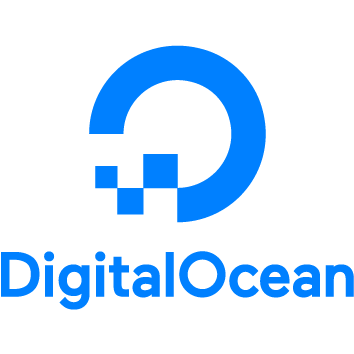DigitalOcean and AWS(Amazon Web Services) are cloud service platforms that offer database storage, computer power among other functionalities. DigitalOcean’s goal seems to be to sell very straight-forward servers to developers, whereas AWS seems to want to offer anything anyone could possibly want, covering the entire gamut of cloud computing and cloud storage. I’ve used both and have found that each have their pros and cons, and in this article I will make comparisons between DigitalOcean and AWS so get you an overview of both these vendors.
Range of Services
Digital Ocean focuses sells standard VPS servers with a very flexible provisioning and billing. They currently has 8 data centers positioned in New York City, Amstedam, San Francisco, Singapore, LonDon, Frankfurt, Toronto, Bangalore India. DigitalOcean concentrates on three key selling points to stand out: Simplicity, High-Performance virtual servers and pricing. Most of their customers are the developers who want to deploy ‘Servers’ and applications to test it out. DO focuses on selling cheap compute droplets, which is one of AWS’s many products.
In stark contrast to DigitalOcean is Amazon, Amazon’s AWS is the market’s leader by far, in fact it is estimated that Amazon has as much computing capacity as the next 11 competitors on the list combined. Since AWS has the ‘Everything for Everyone’ approach, it sells multiple products in multiple categories. You can choose various products ranging from storage, networking, to database and compute. They own the largest data centers in the world located strategically in 9 regions around the world.
The Pricing
You can pay a $5/mo droplet (1GB ram – 1 vCPU – 25GB storage – 1TB bandwidth) on DigitalOcean and go upto $920/mo (largest plan with 86GB ram – 46 vCPUs – 575GB storage – 10TB bandwidth).
AWS has wide range of pricing and most advanced configurations for VMs including GPU support and etc. Amazon EC2 has a large number of instance types, ranging from micro instances with less than a GB of memory to large, disk or memory optimized servers. Each of these instance types can be further enhanced with extra storage volumes with provisioned IOPs. In November 2016, AWS launched a dev-centric service called, Lightsail. Lightsail gives you a simple VPS offering, prices starting from 5$ with 512 MB Memory-1 Core Processor – 20 GB SSD Disk and 1 TB Transfer.
Overview
| DigitalOcean | Amazon Lightsail | |
|---|---|---|
| Memory | 1 GB | 512MB |
| Processor | 1 Core | 1 Core |
| Storage | 25GB SSD | 20GB SSD |
| Transfer | 1TB | 1TB |
| Overage | $0.02/GB | $0.09/GB |
| Network In | 1Gbps | … |
| Network Out | 1Gbps | … |
| Price | $5/month ($0.007/hour) | $5/month ($0.007/hour) |
Both companies are at the same price for the cheapest package but DigitalOcean is offering more storage than Amazon Lightsail and twice much of RAM.
Performance Benchmarks
To known the performance of each VPS plan, we have runs some commands on the cheapest package – $5/mo – at both companies.
Memory Benchmarks
| DigitalOcean | Amazon Lightsail | |
|---|---|---|
| Number of Events | 104,857,600 | 104,857,600 |
| Total Time | 84.3949s | 71.4697s |
| Execution Time | 67.3855s | 56.8831s |
| Minimum Request | 0.00ms | 0.00ms |
| Average Request | 0.00ms | 0.00ms |
| Maximum Request | 1.51ms | 0.23ms |
| 95th Percentile | 0.00ms | 0.00ms |
| Operations/sec | 1,242,463.36 | 1,467,161.71 |
| MB/sec | 1,213.34 | 1,432.78 |
| DigitalOcean | Amazon Lightsail | |
|---|---|---|
| Number of Events | 104,857,600 | 104,857,600 |
| Total Time | 81.5642s | 71.3810s |
| Execution Time | 64.9544s | 56.8120s |
| Minimum Request | 0.00ms | 0.00ms |
| Average Request | 0.00ms | 0.00ms |
| Maximum Request | 5.21ms | 0.19ms |
| 95th Percentile | 0.00ms | 0.00ms |
| Operations/sec | 1,285,584.18 | 1,468,984.58 |
| MB/sec | 1,255.45 | 1,434.56 |
As you see, DigitalOcean offering more RAM ended up having faster speeds. If RAM is important to you, you’d get more bang for your buck with DigitalOcean.
CPU Benchmarks
| DigitalOcean | Amazon Lightsail | |
|---|---|---|
| Number of Events | 10,000 | 10,000 |
| Total Time | 13.0227s | 11.3688s |
| Event Execution | 13.0198s | 11.3672s |
| Minimum Request | 1.22ms | 1.03ms |
| Average Request | 1.30ms | 1.14ms |
| Maximum Request | 5.17ms | 2.16ms |
| 95th Percentile | 1.34ms | 1.21ms |
Both companies performed about the same at the 9th percentile. Lightsail max requests weren’t nearly as high as DO.
File I/O Benchmarks
| DigitalOcean | Amazon Lightsail | |
|---|---|---|
| Number of Events | 10,000 | 10,000 |
| Total Time | 1.4641s | 6.6209s |
| Execution Time | 0.5873s | 1.9269s |
| Minimum Request | 0.00ms | 0.00ms |
| Average Request | 0.06ms | 0.19ms |
| Maximum Request | 1.80ms | 1.82ms |
| 95th Percentile | 0.10ms | 0.37ms |
| Requests/sec | 6,929.91 | 1,510.36 |
| MB/sec | 106.72 | 23.599 |
DigitalOcean performed a over 4x the requests per second of Lightsail. DO totally faster than Amazon on this test.
MYSQL Benchmarks
sysbench –test=oltp –oltp-table-size=1000000 –mysql-user=root prepare
sysbench –test=oltp –oltp-table-size=1000000 –mysql-user=root run
sysbench –test=oltp –oltp-table-size=1000000 –mysql-user=root cl
| DigitalOcean | Amazon Lightsail | |
|---|---|---|
| Number of Events | 10,000 | 10,000 |
| Total Time | 43.8152s | 52.5180s |
| Execution Time | 43.7459s | 52.4601s |
| Minimum Request | 2.53ms | 2.37ms |
| Average Request | 4.37ms | 5.25ms |
| Maximum Request | 325.37ms | 171.01ms |
| 95th Percentile | 8.45ms | 13.58ms |
| Read/write Requests/sec | 4,336.39 | 3,617.80 |
DigitalOcean had the best performance at the 95th percentile and the most reads/write requests per second but the maximum request time was nearly a second. Lightsail was second in read/writes but also had a significantly better maximum request time.
Apache Benchmarks
| DigitalOcean | Amazon Lightsail | |
|---|---|---|
| Concurrency Level | 1,000 | 1,000 |
| Time taken | 1.991s | 1.285s |
| Completed Requests | 10,000 | 10,000 |
| Failed Requests | 11 | 4 |
| Requests/sec | 5,023.11 | 7,784.84 |
| Time per request | 199.080ms | 128.455ms |
| Transfer rate Kbyte/sec | 56,990.74 | 88,386.49 |
Amazon Lightsail win with this test, they faster on all cases.
Network Benchmarks
| DigitalOcean | Amazon Lightsail | |
|---|---|---|
| Distance | 2,282.16km | 1,933.53km |
| Ping | 75.602ms | 65.945ms |
| Download Mbit/sec | 329.19 | 197.72 |
| Upload Mbit/sec | 112.22 | 106.61 |
DigitalOcean is the winner of this test although the speed results do not make a significant difference.
Features and Usability
| Amazon | DigitalOcean | |
|---|---|---|
| Compute | EC2 | Droplets |
| Storage | EBS | Volumes |
| IP | Public IP | Elastic IP |
| Windows VM | Yes | No |
| Cloud Init Support | Yes | Yes |
| Security Groups | Yes | Firewall |
| Load Balancer | ELB | Load Balancer |
| Autoscaling | Autoscaler | Not Available |
| APIs | Yes | Yes |
| Developer Friendly | Medium | Super Easy |
| SSD Backed Storage | Yes | Yes |
| Object Storage | S3 | Yes |
| Single Click Installs | Yes | Yes |
| Marketplace | Partner Eco System | Community Projects |
| Simplicity | Requires decent knowledge on cloud | Super powerful |
| IoT Services | Yes | No |
| Analytics Services | Yes | No |
| Monitoring Services | Yes | Yes (Graphs) |
| Backups | Yes | Yes |
| Global Datacenters | Yes | Yes |
| Hybrid Cloud Support | Yes | No |
| Upgrade VPS from admin console | No | Yes |
| Mobile Friendly UI | No | Yes |
| Accepted Forms of Payment | Credit cards | Credit cards, Paypal |
| Hidden CPU Model | No | No |
| SSH Keys Setup | Yes | Yes |
| DDOS Protection | No | No |
| Hourly Billing | Yes | Yes |
Both companies offer a lot of features to users. DigitalOcean doesn’t have as many features, but available features are nicely organized, whereas in AWS feature organization is a whole mess, but AWS has a tremendous amount of features which are difficult to be reviewed in this small article.DigitalOcean and AWS both are extraordinary cloud computing services that provide sophisticated features which help in creating complex web applications at a decent price.
The support system provided by DigitalOcean is far more superior than Amazon when you are new to the cloud. They have a huge community of developers and users, tutorials, how-to guides, and everything you need answers to. But if you are using Microsoft Windows operating system, then DigitalOcean isn’t an optimum choice, you can deploy servers using predefined Linux installation only. Basically, DigitalOcean is Infrastructure as a Service (IaaS), where you have to manage almost everything (like security, operating system, databases, and more).
Amazon’s process is a bit mechanical which is fine considering their platform and scale. Amazon EC2 is compatible with any OS. So, a plus to EC2 in DigitalOcean vs AWS match. Basically, AWS offers managed services (Platform as a Service or PaaS), which manages everything on its own except applications.
Conclusion
DigitalOcean is not really an Amazon competitor. Its target market is small developers who need to quickly start up a small high-performance instance. Still, Amazon is getting shown up by the newcomer when it comes to VM performance on the two platforms. DigitalOcean also gives the user a clean, easy-to-use interface with few features and one-click deployments. Amazon, on the other hand, offers a IaaS/ PaaS cloud supermarket where you can pick nearly any cloud service you could possibly want, and some that you didn’t even know existed, such as mobile analytics and cloud workflows.
You should only compare DigitalOcean with Linode and Vultr or any other cloud hosting company. With AWS, comparing it to the Microsoft Azure and Google Cloud Platform is more accurate.







